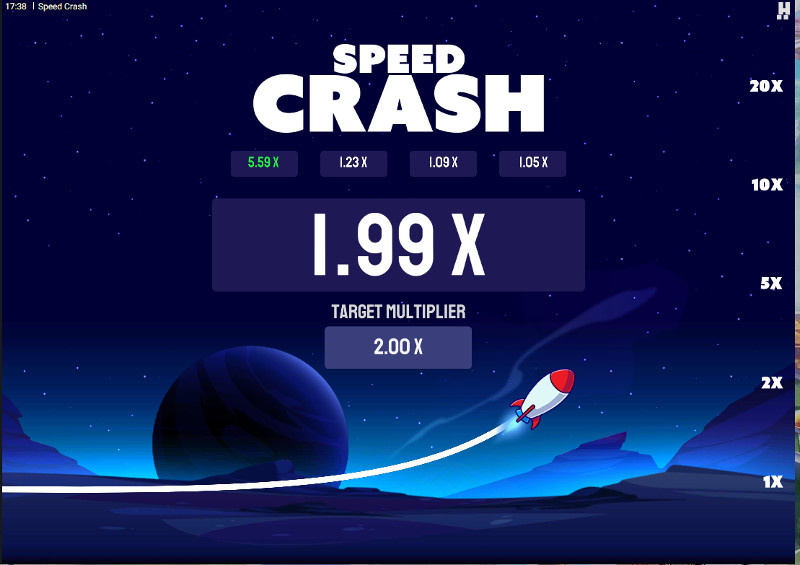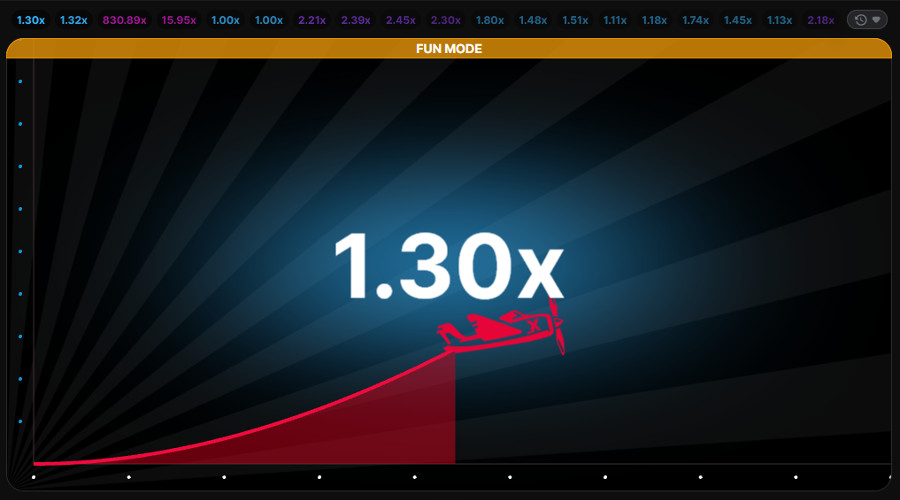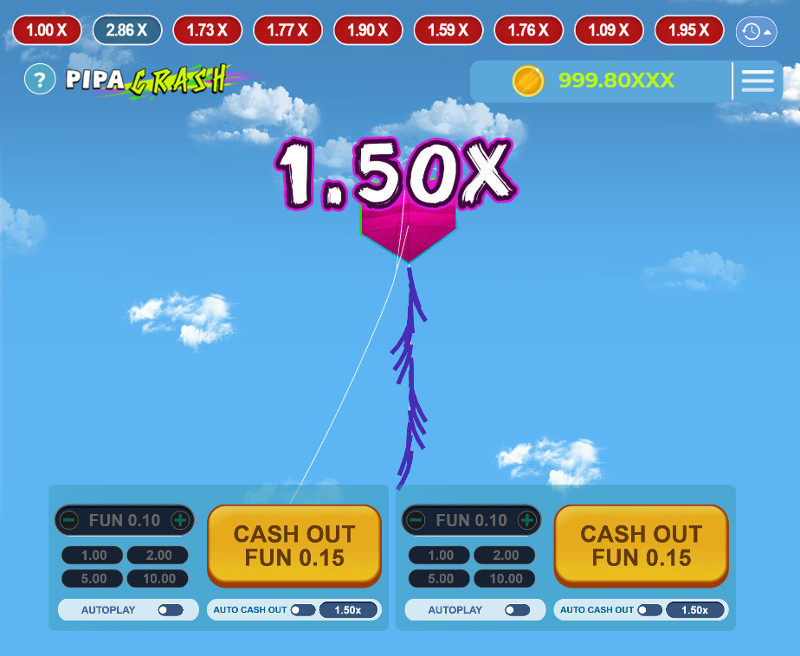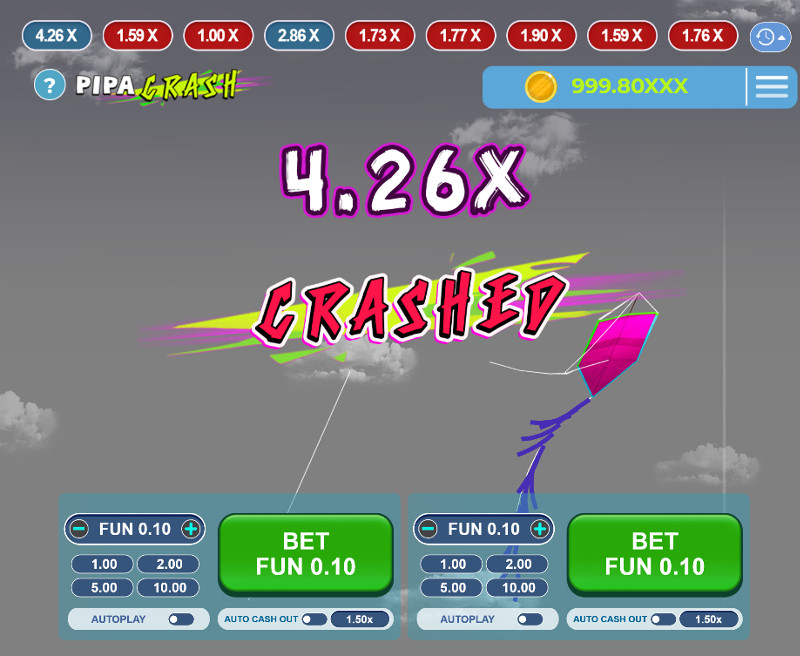Crash gambling games have emerged as one of the most engaging innovations in online betting, combining split-second decisions with potentially lucrative rewards. At their core, these games present players with a deceptively simple challenge: watch a multiplier climb higher and higher, then cash out before it crashes to zero. While the concept appears straightforward, mastering these games requires a detailed understanding of probability, risk management, and psychological control. The growing popularity of crash games has sparked intense debate within the gambling community about their mechanics, strategies, and the fine line between skillful play and pure chance.
Key Takeaways
- Crash games involve betting on a multiplier that increases until randomly crashing, with players aiming to cash out before the crash.
- Players win by withdrawing their bet before the crash point, with multipliers typically ranging from 1.00x to over 100.00x.
- Games use provably fair algorithms to determine crash points, ensuring transparency and randomness in gameplay outcomes.
- Different variations include Classic Crash, Aviator Style, and Rocket Crash, each offering unique visuals and betting features.
- House edge of 3-5% ensures operator profitability while maintaining fair gameplay mechanics for players.
How Crash Games Work?
Crash games operate on a core mechanic where players must time their cash-out before a random crash point to secure their winnings. The multiplier steadily climbs with two decimal places of precision, starting from 1.00x and potentially reaching beyond 100.00x, though games can crash at any point. A provably fair algorithm determines each round’s crash point, ensuring transparency and fairness.

The underlying mathematics incorporates a house edge between 3-5%, which guarantees long-term profitability for operators. Players watch their potential profits update in real-time as the multiplier increases, with winnings calculated by multiplying their initial stake against the current multiplier value.
Players can approach crash games with various strategies. Some prefer manual cash-outs based on personal judgment and experience, while others utilize auto cash-out features to lock in predetermined multiplier targets. Advanced players might employ multiple betting approaches across consecutive rounds and implement strict bankroll management through careful bet sizing controls.
Understanding Game Mechanics and Strategy
Crash game strategy centers on disciplined bankroll management combined with calculated risk assessment. Players must strictly limit their bet sizes to 1-2% of their total funds while carefully evaluating target multipliers based on historical data and pattern analysis.
Successful gameplay relies on progressive betting approaches where wins lead to gradual bet increases within safe limits. Conservative multiplier targets, typically between 1.5x and 2x, provide opportunities for consistent small wins rather than risky high-multiplier attempts. Thorough data analysis and statistics tracking inform strategic decisions, while predetermined stop-loss limits protect against significant losses.
Emotional control plays a crucial role during gameplay, as does a firm understanding of probability principles. Players must internalize that each round operates independently, avoiding the temptation of chase betting after losses. Consistent risk management protocols help maintain disciplined betting practices throughout gaming sessions.
The core mechanics involve timing cash-outs before crashes occur, with multipliers increasing steadily to two decimal places. Each round’s crash point is determined by a provably fair algorithm, with games potentially crashing at 1.00x or continuing beyond 100.00x. The house maintains an edge of 3-5% through the mathematical model, ensuring operator profitability over time.
Players can execute their strategies through manual cash-outs based on judgment, automated cash-outs at preset multipliers, or multiple betting approaches across consecutive rounds. Real-time profit calculations multiply the initial stake by current multipliers, allowing players to track potential returns throughout each round.
These fundamental elements require disciplined execution while maintaining flexibility to adapt to changing game conditions. Success depends on consistently applying these strategies while managing risks effectively.
Managing your Bankroll
Effective bankroll management requires disciplined adherence to predetermined spending limits for gambling activities. Players should allocate a fixed budget and maintain strict boundaries against exceeding it, while keeping individual wagers between 1-2% of their total bankroll. Meticulous tracking of all gambling transactions, including wins and losses, enables informed decision-making. Stop-loss limits must be established for both individual sessions and daily activities, with prudent withdrawal of portions from significant wins rather than complete reinvestment.
Proper risk management involves strategically dividing the bankroll into smaller session amounts to prevent overexposure. When losses occur, resist the urge to increase bet sizes in attempts to recover. Gambling funds should remain entirely separate from personal finances to maintain clear boundaries. Setting and adhering to specific profit targets helps maintain discipline, while regular breaks allow for objective assessment of gambling performance and strategy adjustment as needed.
Proper bankroll management helps players maintain control while extending their playing time and protecting their financial resources. By implementing these strategies, players can approach crash gambling more systematically and reduce the risk of significant losses. Remember that consistent, smaller bets typically yield better long-term results than aggressive betting patterns.
Popular Crash Game Variations
Crash gambling has evolved into several distinct variations across online platforms, each offering unique features while maintaining the core multiplier-based gameplay mechanic. These variations cater to different player preferences while preserving the fundamental thrill of timing-based cash-out decisions.
The most prevalent crash game variations include:
- Classic Crash – Features a simple ascending line graph with multiplier values, allowing players to manually cash out or set auto cash-out points
- Aviator Style – Incorporates an animated airplane that flies upward, representing the multiplier curve, with improved visual engagement and social betting features
- Rocket Crash – Utilizes a rocket ship animation climbing higher, often including additional betting options and side missions

Each variation maintains transparent house edges and provably fair systems, ensuring game integrity across platforms. Modern crash games frequently implement multiple betting positions, allowing players to place concurrent wagers on different multiplier targets. Some versions incorporate chat features, betting history statistics, and trend analysis tools to improve the gaming experience. Platform-specific innovations continue to emerge, introducing new visual themes and mechanical tweaks while preserving the fundamental crash game framework.
Risk Factors and Warning Signs
Understanding the risk factors and warning signs associated with crash gambling is crucial for both players and operators.
Crash gambling can quickly become problematic when players start chasing losses by increasing their bet sizes and resort to using borrowed money or credit. When gambling time extends beyond intended sessions and begins interfering with work or personal responsibilities, it often indicates developing issues. Using gambling as an escape mechanism from real-world problems further compounds these risks.
Several warning signs require careful monitoring. Players should watch for patterns of betting beyond their financial means and an inability to stop despite accumulating losses. Dishonesty about gambling activities, anxiety during non-playing periods, and obsession with crash gambling strategies are crucial red flags that shouldn’t be ignored.
To maintain healthy gambling habits, implementing preventive measures is essential. Players must establish strict deposit limits before beginning and set clear boundaries for gaming sessions. Meticulous expense tracking and separate gambling accounts help maintain financial control. When gambling behavior becomes concerning, utilizing platform-provided self-exclusion tools can create necessary distance and prevent further issues.
Risk Management Steps:
- Regular assessment of gambling patterns
- Documentation of wins and losses
- Implementation of cooling-off periods
- Consultation with gambling support services
- Development of alternative leisure activities
Players should regularly evaluate their gambling behavior and seek professional assistance if warning signs become apparent.





